India
Agra
Taj Mahal
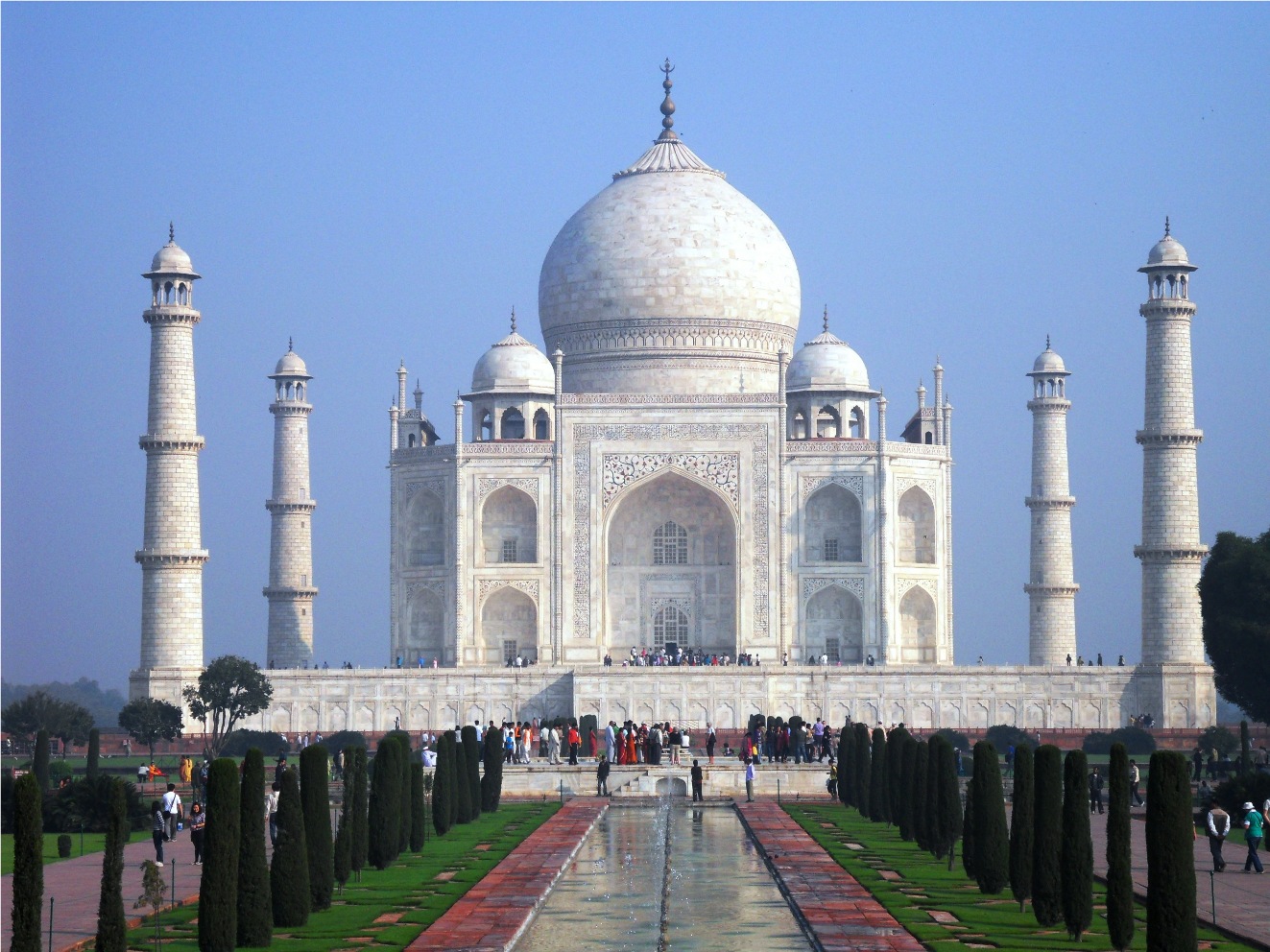
| Summary
The Taj Mahal, known as the symbol of eternal love, took 22 years to build by the Mughal Emperor Shah Jahan as a mausoleum to his beloved wife Mumtaz Mahal who died in 1631. Its beauty is breath-taking, although its cost to construct nearly bankrupted the nation. It is one of the New 7 Wonders of the World.
|
The Taj Mahal is one of the most splendid pieces of architecture in the world. It was built by the 5th Mughal emperor of India, Shah Jahan, as a mausoleum to his beloved wife Ar-ju-mand Banu Begum, a Muslim Persian princess better known by her other name, Mumtaz Mahal, which means, the Distinguished of the Palace. The couple met in 1607 when he was 15, and he fell in love, although they weren't married until 1612 when she became his second wife. She was his companion on all his journeys and military expeditions. It was on one of his expeditions when giving birth to their 14th child that she died. Overpowered by grief, Shah Jahan resolved to immortalize the memory of his beloved wife by building the finest sepulcher ever built, which was to become a monument to eternal love.
The Taj Mahal is in fact an architectural complex and not just one building. It stands in a formally laid-out walled garden entered through a pavilion and comprises of five main elements: The Mausoleum (which is what most people know as the Taj Mahal) with four minarets, a Mosque, a Rest House or the Response placed opposite to give it symmetry, the main Gateway, and the garden. All were built as an integral part of a single unit, carefully planned to harmonise, as a law of Islam decrees that once a tomb is completed nothing can be added or be taken away.
The entrance to the complex is through the Gateway, which is constructed of red sandstone, it has three stories and is adorned with calligraphy.
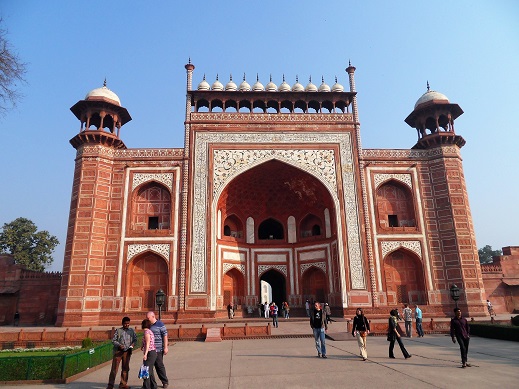
This leads into the gardens. These were not the original gardens but were laid out by the British in the days of the Raj, the original was much more natural whereas today they are nicely manicured lawns, which they weren’t in Shah Jahan's day, the gardens contain Cypress trees, which symbolise death, and water, which is an important aspect of Islam. Although the garden is best observed looking back from the mausoleum towards the gateway.
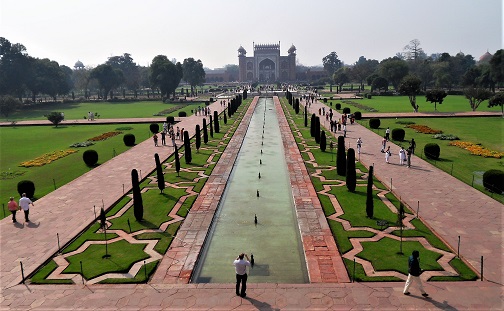
The thing that is most noticeable as soon as one enters through the Gateway is the mausoleum itself.
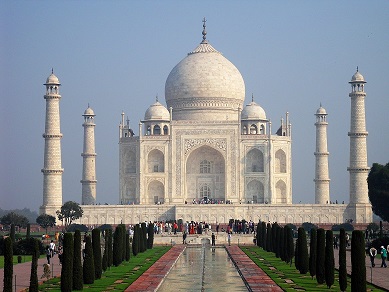
The mausoleum stands on a raised platform (186 feet square) with its four corners truncated, forming an unequal octagon. The mausoleum is constructed of brick and covered with white marble. Its central dome is 58 feet in diameter and rises to a height of 213 feet and is flanked by four subsidiary domed chambers.
At the side of the Mausoleum are four detached minarets rising from the plinth, these are 138 feet high. They were built out of plumb, slanting so that if they were to topple, they would fall away from the mausoleum. They also form a visual framework for the mausoleum and enhance the symmetry of the building.
Entry to the Mausoleum is from the platform through the entrance portal.

The interior is beautifully decorated with carvings and semi-precious inlaid stones and at the centre of the room are the tombs. The tombs of Shah Jahan and Mumtaz Mahal are actually located in a burial crypt below, above them; in the main chamber are false tombs, a common practice in mausoleums built during the Mughal period. These lie in the centre of the room which is surrounded by a marble screen. The tomb of Shah Jahan is the only asymmetrical thing in the Taj which indicates that the original plans for the mausoleum did not include Shah Jahan's cenotaph. The entire mausoleum - inside and outside - is decorated with inlaid designs of flowers and calligraphy using semi-precious gems such as agate and jasper. The designs are inlaid into the marble using the process known as Pietra Dura. Unfortunately, photography is not permitted inside the mausoleum.
To the west of the mausoleum on a plinth stands the Mosque, which is made from red sandstone and measures 210 feet in length and 90 feet in width. It has a marble facing which provides a contrast of colours and has one dominant portal, with smaller portals on each side.
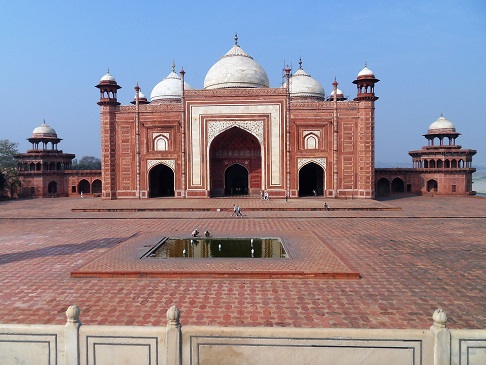
Opposite is The Rest House which is a mirror of the mosque. Both are finely carved decorations on walls and ceilings.

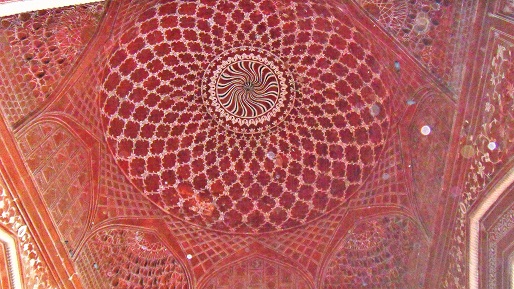
From its inception in 1631, it took 22 years to complete the complex and nearly bankrupted the nation. In 1658 Shah Jahan was deposed by his son and imprisoned in The Red Fort where he was only able to look at the Taj; he was never allowed to visit it again. He remained in the Red Fort until his death in 1666 when he was interred in the Taj next to Mumtaz.
In 1983, the Taj Mahal was inscribed by UNESCO as a World Heritage Site. In 2016 it was listed as one of the New 7 Wonders of the World.
To see more photographs and take a virtual tour of the site click on the photoshow below.



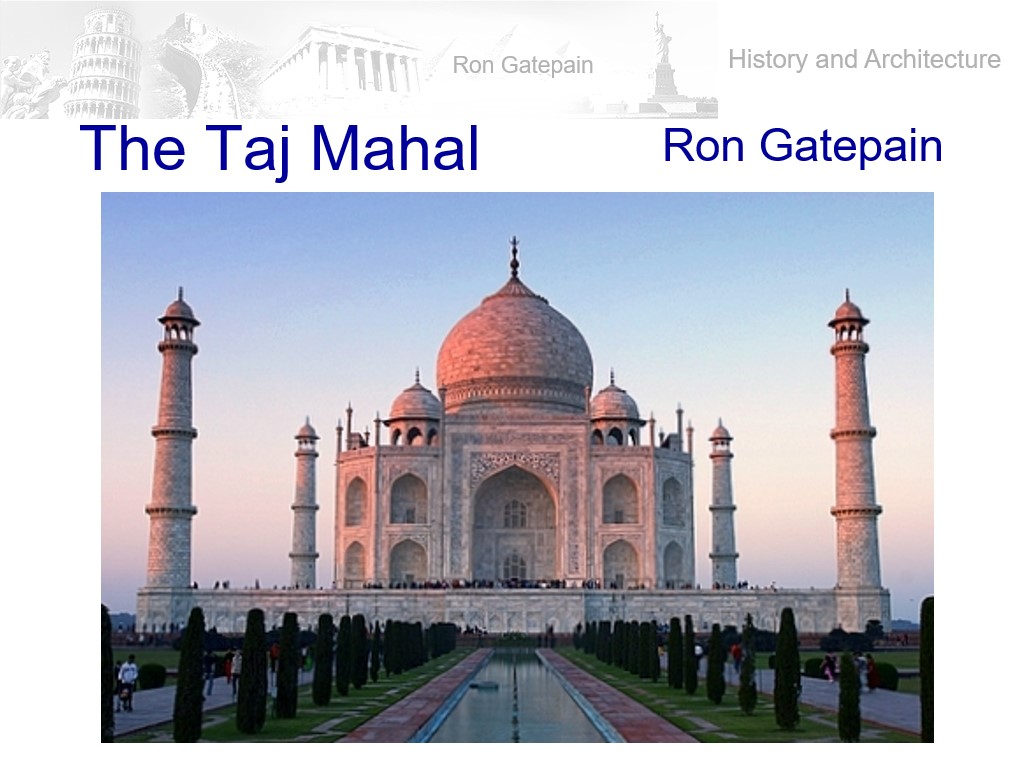
.jpg?745)







